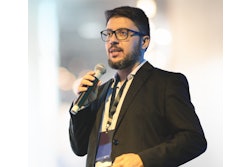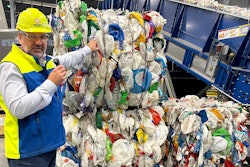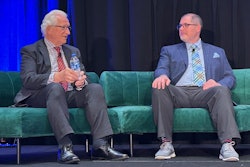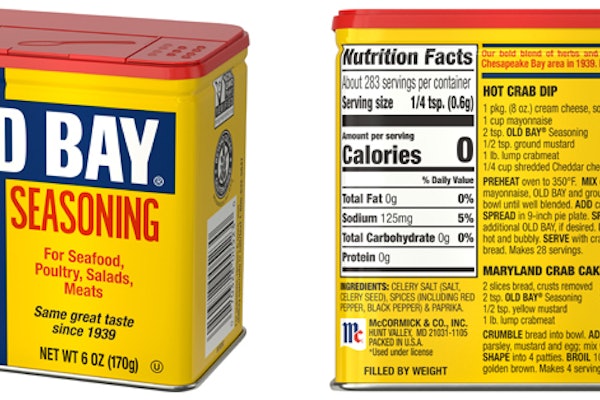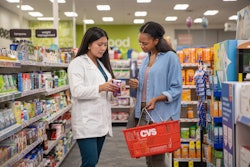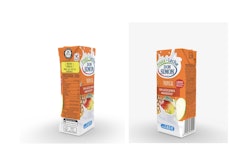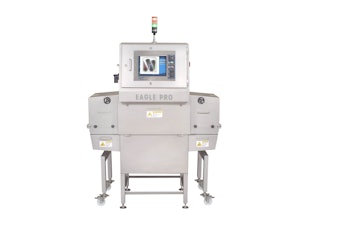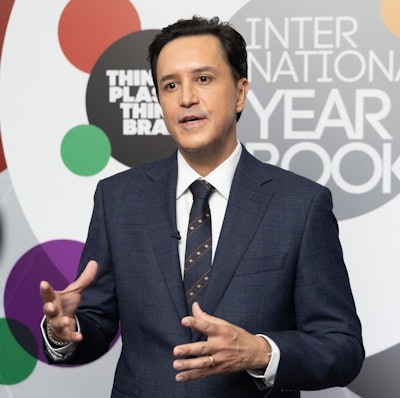
As Brazilian packaging companies look to expand their presence in the U.S. market, Think Plastic Brazil is taking the lead with a strategy built on design innovation, sustainability, and export readiness. At the World Plastic Connection Summit in São Paulo today, Packaging World spoke with Carlos Moreira, executive director of the Brazilian Plastic Institute and CPO of Think Plastic Brazil, about how the organization is helping manufacturers navigate global markets and meet the evolving demands of international buyers.
PW:
What are the core strategies Think Plastic Brazil is using to position Brazilian plastic (packaging) companies in the U.S. market?
Carlos Moreira:
Think Plastic Brazil structures its strategy through an official Sectoral Project in partnership with ApexBrasil [The Brazilian Trade and Investment Promotion Agency] aiming to internationalize the Brazilian plastic transformation industry. Our approach is based on five strategic pillars. They are international promotion, innovation and design, sustainability, competitive intelligence, and capacity building.
Specifically for the U.S. market, we implement targeted initiatives such as the participation in international trade fairs, for example, PACK EXPO, the World Plastic Connection Summit, and Buyer Projects that foster direct B2B connections with international importers. Our market positioning also integrates innovation through proprietary tools like the Color Trend [a color trends guide produced by Think Plastic Brazil to guide decisions by professionals in the converted plastics industry in Brazil], which introduces Brazil’s visual identity into product differentiation, and Global Green Design, which strategically prepares companies to compete through ESG, compliance, and design excellence.
How has the U.S. market evolved in terms of demand for sustainable and innovative packaging, and how is Brazil aligning with those expectations?
While the U.S. has increased its demand for more sustainable and innovative packaging solutions, Brazil has followed this trend through structured capacity building and product adaptation. Think Plastic Brazil has integrated sustainability modules into its international presence, thanks to partnerships with companies like Braskem. These modules are showcased at key fairs to highlight circular economy practices and eco-friendly material development. Additionally, we provide specific training on sustainable communication and environmental strategy, ensuring our companies are aligned with global trends and expectations.
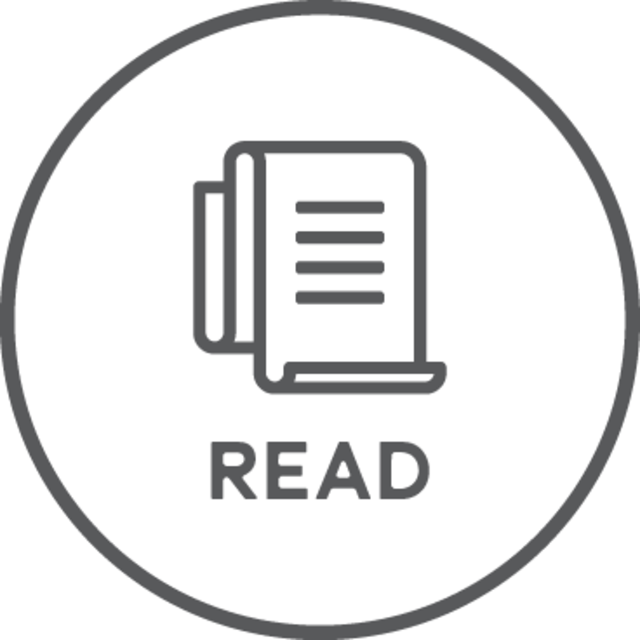 | Read this related article, “Live from Brazil: How Innovation Is Driving Global Packaging Trends” |
Brazil is known for its renewable energy and circular economy initiatives. How are these sustainability strengths being communicated to U.S. partners and buyers?
Although macro initiatives on circularity are led by entities such as ABIPLAST [Brazilian Association of the Plastic Industry], Think Plastic Brazil plays a complementary role by fostering education, visibility, and strategic ESG positioning among supported companies. We achieve this through sustainability-focused lectures, courses, and the inclusion of circular economy modules in international fair displays.
What role does innovation—such as lightweighting, advanced recycling, or digital printing—play in the internationalization of Brazilian packaging companies?
Innovation is one of the strategic axes of Think Plastic Brazil. Through the Global Green Design framework, we have implemented specific programs to boost international design competitiveness, such as the Design Innovation Accelerator, R&D Export Lab, and the Circular Design Lab. These programs encourage the co-development of packaging solutions aligned with circularity, aesthetics, and technical feasibility for international markets. In parallel, the Color Trend platform brings an additional layer of value by embedding emotional and cultural storytelling into visual identity, which resonates deeply with international buyers seeking unique narratives.
What are the biggest challenges Brazilian companies face when entering the U.S. market, and how does Think Plastic Brazil help overcome them?
The primary barriers include unfamiliarity with U.S. regulations, adaptation of products and communication to local preferences, and limitations related to booth space and visibility in international fairs. Think Plastic Brazil tackles these through diagnostics, mentoring, and technical guidance offered within our export qualification cycle. We also provide logistical and marketing consulting, and collaborate with PEIEX to offer targeted export clinics during Buyer Projects. Feedback from supported companies indicates that although they value international visibility, improvements in fair infrastructure and stand positioning remain necessary.
How do you ensure companies are export-ready in terms of quality standards, certifications, and logistics?
Companies are also guided through technical consulting processes to ensure their documentation, product portfolio, and operational readiness align with international expectations. Complementary programs like the Export Design Booster help them tailor packaging and branding to cultural preferences in specific target markets, including the U.S..
Are there any key partnerships or collaborative initiatives between Brazilian institutions and U.S. organizations that support market entry?
Yes. Think Plastic Brazil collaborates closely with SECOMs [Brazilian Commercial Sections in U.S. embassies and consulates], as well as with international design studios and academic institutions via the Global Partnership Accelerator. These initiatives aim to formalize business and R&D partnerships and have already led to joint developments and licensing agreements.
How is Think Plastic Brazil facilitating dialogue or matchmaking between Brazilian manufacturers and U.S. CPG brands or retailers?
Through our World Plastic Connection Summit Buyer Projects and virtual matchmaking tools, we ensure curated meetings between pre-qualified Brazilian suppliers and international buyers. These meetings are further enriched by the use of personalized company profiles and CRM-based selection, ensuring relevance and efficiency. Our structure also includes in-person guided tours and immersive missions to foster deeper commercial ties.
What trade shows, roadshows, or commercial missions in the U.S. has Think Plastic Brazil participated in recently?
Our presence at PACK EXPO International and PACK EXPO Las Vegas is a staple in our calendar. We also promote participation in other global shows aligned with key verticals, including agrobusiness and construction, and develop specific actions within our own platform, the World Plastic Connection Summit, which has grown into a hybrid annual event encompassing business meetings, lectures, and product exhibitions.
What kind of reception have Brazilian companies received from U.S. buyers at these events?
The feedback collected indicates that U.S. buyers have recognized the quality and creativity of Brazilian products. However, companies have highlighted the need for better stand infrastructure and more prominent locations within fairs to optimize visibility. These insights have directly informed our action plan to enhance future participations.
How do Brazilian plastic packaging companies differentiate themselves in a competitive U.S. market?
Differentiation is rooted in storytelling, design originality, and the emotional value of Brazilian culture. The Color Trend is a strategic differentiator, offering exclusive Brazilian-origin color palettes validated by the supply chain and inspired by national narratives. These colors are promoted internationally through design kits, yearbooks, and immersive experiences in trade fairs, reinforcing Brazil’s role as a trendsetter rather than a follower in global packaging aesthetics.
Are there any Brazilian packaging formats or technologies that are gaining traction or standing out in the U.S.?
Yes, formats that incorporate Color Trend-branded colors and packaging concepts rooted in Brazilian identity have stood out. Additionally, companies that align with circularity principles and present certified packaging prototypes, developed through initiatives like the Circular Design Lab, are gaining attention in international fairs and attracting interest from global buyers.
What are Think Plastic Brazil’s top priorities for 2025 when it comes to U.S. market engagement?
Our focus for 2025 includes launching the Color Trend as a registered brand on global platforms, expanding the reach of the Global Design Hub, and amplifying our presence in North American events with better infrastructure. We also aim to increase the number of companies qualified in the Expert Plus category, and to consolidate Global Green Design as a benchmark of Brazilian design and sustainability worldwide.
Where do you see the greatest opportunities for growth or collaboration between the Brazilian and U.S. plastic/packaging sectors?
The strongest opportunities lie in co-creating packaging solutions with cultural value and environmental compliance. U.S. brands increasingly seek partnerships that offer narrative depth and ESG alignment—areas where Brazilian companies excel through initiatives like Color Trend and platforms such as the World Plastic Connection Summit, which facilitate long-term business development through authentic Brazilian identity and global innovation standards. PW



